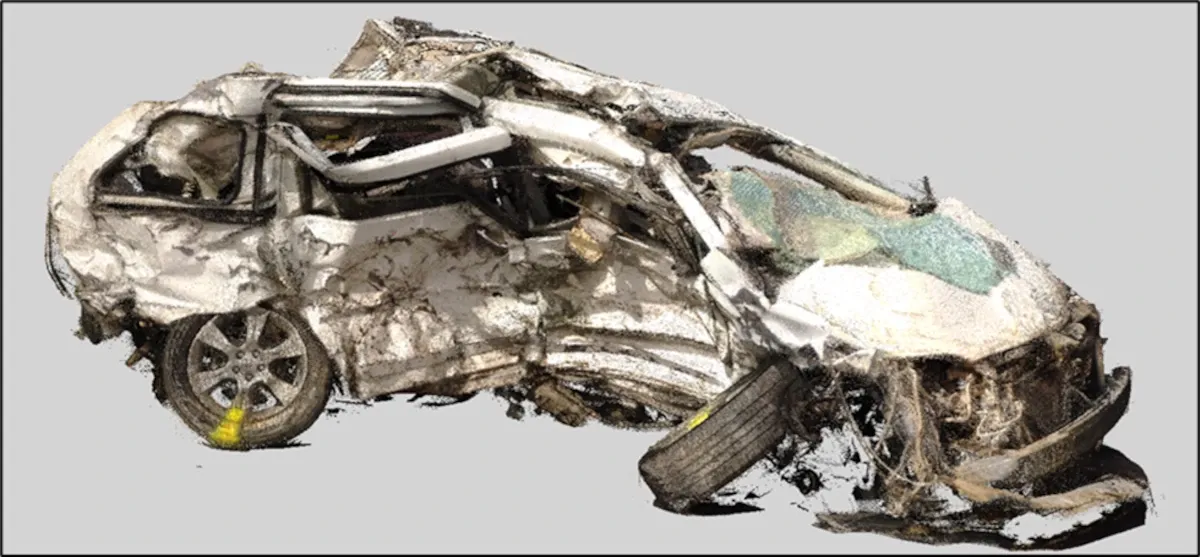A crash in the Las Vegas area that killed nine people prompted the recommendation
A fatal multivehicle collision that killed nine people last year has led the National Transportation Safety Board (NTSB) to call for intelligent speed monitoring technology in all new cars.
The crash in North Las Vegas occurred when a 2018 Dodge Challenger entered an intersection against a red traffic signal with a vehicle recorded speed of 103 mph, colliding with five other vehicles. Seven occupants of a minivan and the Challenger’s driver and passenger died.
The driver of the Challenger was determined to have been impaired by cocaine and PCP and had a history of multiple speeding offenses.
One-third of traffic deaths
You normally think of the NTSB investigating airline, train and bus accidents but it has the authority to look into any transportation accident involving loss of life. Speeding certainly qualifies, with more than 12,000 fatalities recorded in 2021.
“This crash is the latest in a long line of tragedies we’ve investigated where speeding and impairment led to catastrophe, but it doesn’t have to be this way,” said NTSB Chair Jennifer Homendy in a news release.
“We know the key to saving lives is redundancy, which can protect all of us from human error that occurs on our roads. What we lack is the collective will to act on NTSB safety recommendations,” Homendy said.
Systemic deficiencies
The investigation into the North Las Vegas crash led the NTSB to call for stiffer measures to deter speeding. The board issued the recommendations Tuesday at a public board meeting after determining the crash was caused by excessive speed, drug-impaired driving and Nevada’s failure to deter the driver’s speeding recidivism due to systemic deficiencies, despite numerous speeding citations.
The technology the board is calling for – intelligent speed assistance technology, or ISA, – uses a car’s GPS location compared with a database of posted speed limits and its onboard cameras to help ensure safe and legal speeds.
Passive ISA systems warn a driver when the vehicle exceeds the speed limit through visual, sound, or haptic alerts, and the driver is responsible for slowing the car. Active systems include mechanisms that make it more difficult, but not impossible, to increase the speed of a vehicle above the posted speed limit and those that electronically limit the speed of the vehicle to fully prevent drivers from exceeding the speed limit.
The NTSB's recommendations
As a result of the investigation, the NTSB is issuing a series of recommendations to the National Highway Traffic Safety Administration (NHTSA), one new recommendation to states and one new recommendation to manufacturers:
To NHTSA:
- Require ISA systems that, at a minimum, warn a driver a vehicle is speeding.
- Educate the public about the benefits of ISA.
- Update the guidelines for state highway safety programs to include identification and tracking of repeat speeding offenders.
- Develop countermeasures to reduce repeat speeding offenses.
- Conduct research and develop guidelines to assist states in implementing ISA interlock programs for repeat speeding offenders.
- Incentivize the adoption of ISA through, for example, the New Car Assessment Program. This recommendation is reiterated from a 2017 recommendation.
To 50 states, the Commonwealth of Puerto Rico and the District of Columbia:
- Implement programs to identify repeat speeding offenders and measurably reduce speeding recidivism.
To 17 car manufacturers:
- Install ISA in all new passenger vehicles that, at a minimum, warns drivers when a vehicle is speeding.

